Do you have a question about the Sony CDX-GT600UI and is the answer not in the manual?
Unit compatibility with disc types (CD-DA, CD-R/RW) and formats (MP3, WMA, AAC).
Procedure to reset the unit after battery changes or connections, with note on data loss.
How to disable the demonstration (DEMO) display that appears when the unit is turned off.
Instructions on removing insulation film from the card remote commander before use.
Guide to set the 12-hour digital clock, using SEEK buttons for adjustment.
Steps to detach and attach the front panel, including safety notes and caution alarms.
Overview of buttons (SEEK, BROWSE, SOURCE/OFF), control dial, and display elements.
Description of USB connector, front panel release, AUX input jack, and remote commander receptor.
Use of RESET button and DSPL/SCRL buttons for system reset and display management.
Functionality of number buttons for presets/selection and the AUX input jack.
Description of all buttons on the RM-X151 card remote commander and their functions.
How to store stations automatically (BTM) and manually, and how to receive stored stations.
Process for automatic station tuning using SEEK buttons and manual fine-tuning.
Explanation of Radio Data System (RDS) and its display indicators (Program Service Name, Clock, etc.).
Details on PTY (Program Types) and CT (Clock Time) services, and how to search by PTY.
Information on CD display items, and how to set repeat and shuffle modes for CD playback.
How to enable the Clock Time (CT) function for automatic clock setting via RDS.
URLs for checking USB device compatibility and supported formats.
Information displayed during USB playback (Source, Track Name, Artist, etc.).
Steps to connect and start playback of a USB device.
Procedure to safely disconnect the USB device to prevent data damage.
Information on iPod compatibility, support sites, and connecting the iPod to the unit.
How to set repeat and shuffle modes for iPod playback (Track, Album, Playlist, Genre, Artist).
How to adjust the volume for iPod playback and stop playback.
Steps to safely disconnect the iPod from the unit.
Behavior of the unit in resuming mode and display items during iPod playback.
How to skip items like albums, podcasts, genres, playlists, and artists in the iPod library.
How to use the unit's controls to operate the connected iPod directly.
How to cycle through display information (Track name, Artist name, Album name, Clock) during iPod operation.
How to search for tracks by name using the Quick-BrowZer feature on CD or USB.
Using Jump mode within Quick-BrowZer to quickly find items by skipping 10% increments.
How to cancel the Jump mode within Quick-BrowZer.
How to search for iPod items alphabetically by selecting the first letter.
How to preview short passages of tracks to find desired songs in CD or USB.
General process for adjusting sound settings like EQ, Position, Balance, Fader, DM+, RB ENH, SW LEVEL, AUX VOL.
Introduction to Sony's Advanced Sound Engine and its features (EQ7, Listening Position, DM+, RB Enhancer).
How to choose from 7 preset equalizer curves or turn EQ off.
How to customize an equalizer curve using preset bases or manual settings.
Adjusting specific frequency bands (63Hz to 16kHz) for custom EQ settings.
Adjusting speaker delays to simulate optimal sound field based on seating position (Front L/R, Front, ALL).
Fine-tuning the listening position with adjustable range (+3 to -3) for better sound localization.
How to enable DM+ Advanced to restore high frequencies lost during sound compression.
How to use rear speakers as a subwoofer by applying a low pass filter.
List of settable items via the SET menu (CLOCK-ADJ, TUNER-STP, CT, AUTO OFF, etc.).
Settings for M.DISPLAY (spectrum analyzer) and AUTO SCR (auto scrolling long items).
Functions for LOCAL (stronger signal tuning) and MONO (FM reception improvement).
Customizing ZAPPIN playback time and beep sound between tracks.
Settings for LPF/HPF frequencies/slopes, and subwoofer phase.
Functions for Loudness (bass/treble reinforcement) and Best Tuning Memory (BTM).
Connecting and adjusting volume for portable audio devices via the AUX input jack.
Precautions for operation, condensation, disc handling, and types that cannot be played.
Limitations and specifications for CD-R/CD-RW discs, including folder/file limits and playback order.
List of compatible iPod models and explanation of 'Made for iPod/iPhone' certification.
Instructions for replacing the battery in the remote commander, with safety warnings.
How to clean connectors between the unit and front panel to ensure proper function.
Guidance on replacing the unit's fuse, including matching amperage and troubleshooting blown fuses.
Step-by-step instructions for detaching the unit from the car's dashboard.
Detailed technical specifications for tuner, CD player, USB, amplifier, general outputs, inputs, power, and dimensions.
Common issues like no power, antenna not extending, no sound, no beep sound, and memory erasure.
Solutions for issues like blown fuse, noise on ignition switch, demonstration mode activation, and display disappearance.
Solutions for display issues, and Auto Off/remote commander problems.
Solutions for poor radio reception, tuning issues, ST indication, and RDS display errors.
Solutions for CD playback problems and MP3/WMA/AAC/USB file playback delays/issues.
Explanations and solutions for CHECKING, ERROR, FAILURE, and HUB NO SUPRT messages.
Solutions for L.SEEK, NO DEV, NO MUSIC, NO NAME, NOT FOUND, OFFSET, OVERLOAD messages.
Explanations for READ, RESET, USB NO SUPRT messages, and character display issues.
Unit compatibility with disc types (CD-DA, CD-R/RW) and formats (MP3, WMA, AAC).
Procedure to reset the unit after battery changes or connections, with note on data loss.
How to disable the demonstration (DEMO) display that appears when the unit is turned off.
Instructions on removing insulation film from the card remote commander before use.
Guide to set the 12-hour digital clock, using SEEK buttons for adjustment.
Steps to detach and attach the front panel, including safety notes and caution alarms.
Overview of buttons (SEEK, BROWSE, SOURCE/OFF), control dial, and display elements.
Description of USB connector, front panel release, AUX input jack, and remote commander receptor.
Use of RESET button and DSPL/SCRL buttons for system reset and display management.
Functionality of number buttons for presets/selection and the AUX input jack.
Description of all buttons on the RM-X151 card remote commander and their functions.
How to store stations automatically (BTM) and manually, and how to receive stored stations.
Process for automatic station tuning using SEEK buttons and manual fine-tuning.
Explanation of Radio Data System (RDS) and its display indicators (Program Service Name, Clock, etc.).
Details on PTY (Program Types) and CT (Clock Time) services, and how to search by PTY.
Information on CD display items, and how to set repeat and shuffle modes for CD playback.
How to enable the Clock Time (CT) function for automatic clock setting via RDS.
URLs for checking USB device compatibility and supported formats.
Information displayed during USB playback (Source, Track Name, Artist, etc.).
Steps to connect and start playback of a USB device.
Procedure to safely disconnect the USB device to prevent data damage.
Information on iPod compatibility, support sites, and connecting the iPod to the unit.
How to set repeat and shuffle modes for iPod playback (Track, Album, Playlist, Genre, Artist).
How to adjust the volume for iPod playback and stop playback.
Steps to safely disconnect the iPod from the unit.
Behavior of the unit in resuming mode and display items during iPod playback.
How to skip items like albums, podcasts, genres, playlists, and artists in the iPod library.
How to use the unit's controls to operate the connected iPod directly.
How to cycle through display information (Track name, Artist name, Album name, Clock) during iPod operation.
How to search for tracks by name using the Quick-BrowZer feature on CD or USB.
Using Jump mode within Quick-BrowZer to quickly find items by skipping 10% increments.
How to cancel the Jump mode within Quick-BrowZer.
How to search for iPod items alphabetically by selecting the first letter.
How to preview short passages of tracks to find desired songs in CD or USB.
General process for adjusting sound settings like EQ, Position, Balance, Fader, DM+, RB ENH, SW LEVEL, AUX VOL.
Introduction to Sony's Advanced Sound Engine and its features (EQ7, Listening Position, DM+, RB Enhancer).
How to choose from 7 preset equalizer curves or turn EQ off.
How to customize an equalizer curve using preset bases or manual settings.
Adjusting specific frequency bands (63Hz to 16kHz) for custom EQ settings.
Adjusting speaker delays to simulate optimal sound field based on seating position (Front L/R, Front, ALL).
Fine-tuning the listening position with adjustable range (+3 to -3) for better sound localization.
How to enable DM+ Advanced to restore high frequencies lost during sound compression.
How to use rear speakers as a subwoofer by applying a low pass filter.
List of settable items via the SET menu (CLOCK-ADJ, TUNER-STP, CT, AUTO OFF, etc.).
Settings for M.DISPLAY (spectrum analyzer) and AUTO SCR (auto scrolling long items).
Functions for LOCAL (stronger signal tuning) and MONO (FM reception improvement).
Customizing ZAPPIN playback time and beep sound between tracks.
Settings for LPF/HPF frequencies/slopes, and subwoofer phase.
Functions for Loudness (bass/treble reinforcement) and Best Tuning Memory (BTM).
Connecting and adjusting volume for portable audio devices via the AUX input jack.
Precautions for operation, condensation, disc handling, and types that cannot be played.
Limitations and specifications for CD-R/CD-RW discs, including folder/file limits and playback order.
List of compatible iPod models and explanation of 'Made for iPod/iPhone' certification.
Instructions for replacing the battery in the remote commander, with safety warnings.
How to clean connectors between the unit and front panel to ensure proper function.
Guidance on replacing the unit's fuse, including matching amperage and troubleshooting blown fuses.
Step-by-step instructions for detaching the unit from the car's dashboard.
Detailed technical specifications for tuner, CD player, USB, amplifier, general outputs, inputs, power, and dimensions.
Common issues like no power, antenna not extending, no sound, no beep sound, and memory erasure.
Solutions for issues like blown fuse, noise on ignition switch, demonstration mode activation, and display disappearance.
Solutions for display issues, and Auto Off/remote commander problems.
Solutions for poor radio reception, tuning issues, ST indication, and RDS display errors.
Solutions for CD playback problems and MP3/WMA/AAC/USB file playback delays/issues.
Explanations and solutions for CHECKING, ERROR, FAILURE, and HUB NO SUPRT messages.
Solutions for L.SEEK, NO DEV, NO MUSIC, NO NAME, NOT FOUND, OFFSET, OVERLOAD messages.
Explanations for READ, RESET, USB NO SUPRT messages, and character display issues.
| Preset Stations | 30 |
|---|---|
| CD Player | Yes |
| MP3 Playback | Yes |
| WMA Playback | Yes |
| AAC Playback | Yes |
| CD-R Playback | Yes |
| CD-RW Playback | Yes |
| USB Port | Yes |
| AUX Input | Yes |
| Bluetooth | No |
| Display Type | LCD |
| Equalizer | Yes |
| Preset EQ | Yes |
| Audio D/A Converter (DAC) | 24-bit |
| Detachable Faceplate | Yes |
| Clock | Yes |
| Remote Control | Yes |
| Power Output | 52 W |
| RMS Power Output | 17 Watts x 4 |
| Tuner | AM, FM |
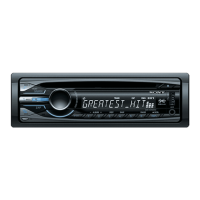

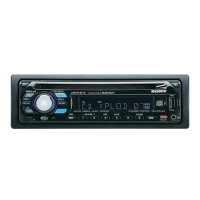
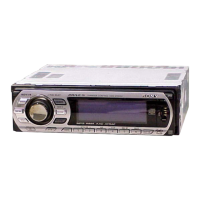
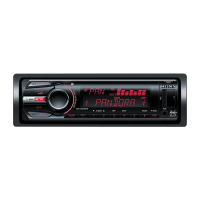
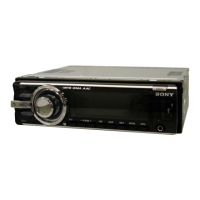
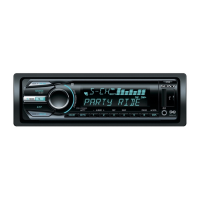
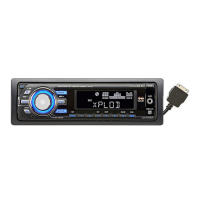

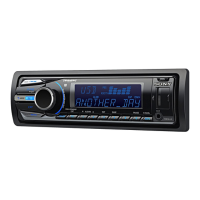
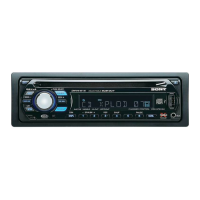
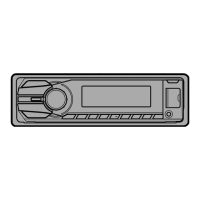
